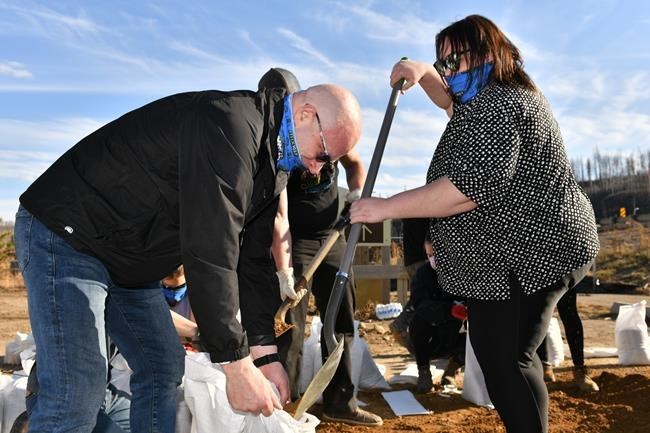FORT MCMURRAY, Alta. — More of the 13,000 residents forced out by flooding in Fort McMurray have been allowed to return to their homes, but an ice jam on the Peace River was threatening several other northern Alberta communities.
The Regional Municipality of Wood Buffalo lifted the mandatory evacuation order for five parts of the city late Friday citing receding water levels. They include residential neighbourhoods, an industrial park and a civic recreation-leisure area.
"We want evacuees back in their residences as quickly and safely as possible and I want to thank people for their patience knowing how anxious everyone has been to get home," Mayor Don Scott said in a release.
Officials noted the mandatory evacuation order remains in effect for just one neighbourhood known as Draper.
Earlier Friday, Environment Minister Jason Nixon said a 44-kilometre-long icy mass on the Peace River could mean another 6,000 residents might need support from the province.
"Little Red River Cree Nation issued a local state of emergency on April 27," Nixon said during a news conference. "We know several thousand people could be affected."
A total of 750 people have already had to leave their homes on the reserve, which includes Garden City on the eastern edge of Wood Buffalo National Park. Nixon said at least 400 of those people need support.
"We are working with the provincial operations centre to get temporary shelter and food to them as quickly as possible."
About 14,000 people in northern Alberta were out of their homes Friday.
Most of them were from Fort McMurray where a different ice jam earlier this week on the Athabasca River led to the flooding of the city's downtown.
"Leaving your homes during a disaster is never ideal," said Nixon. "When you add the stress of dealing with the COVID-19 pandemic, it has certainly been a difficult and challenging week for everyone in northern Alberta affected by flooding."
The situation was improving Friday in Fort McMurray.
Nixon said water levels had fallen by 7.6 metres on the Athabasca River and between one and 1.5 metres on the Clearwater River since Sunday. He added that the toe of the Athabasca ice jam had released overnight and the blockage was about nine kilometres long, down from 25 kilometres at its peak.
Earlier Friday, Scott said he had asked municipal employees to do everything they could to get people back to their homes as soon as possible.
"The water is going down rapidly," he said. "There is real progress being made with the areas that still have water downtown.
"We know that this is a real opportunity for people to get back in their homes to assess what is happening."
An estimated 1,230 structures in the city have been damaged.
It's not the first time Fort McMurray has dealt with a natural disaster. A raging wildfire in May 2016 forced an evacuation of the entire city and destroyed 2,400 homes and buildings.
Officials said mandatory evacuation orders had been lifted for some areas of the city. They couldn't say how many people were being allowed to return, but warned residents that they may not be able to move back in.
"Structures may have been damaged," said Scott Davis, the municipality's director of emergency management. "Residents and business owners are advised to use caution.
"Properties in these areas may have experienced sewer backups; utilities may not have been fully restored."
Macky Singh, who was forced to leave his downtown apartment on Sunday, said he wasn't one of the residents being allowed to return, but he was trying to be patient.
"It is what it is," he said. "It's a waiting game. When it's safe to go, they'll let us know.
"Safety is more important than anything else."
This report by The Canadian Press was first published May 1, 2020
The Canadian Press


